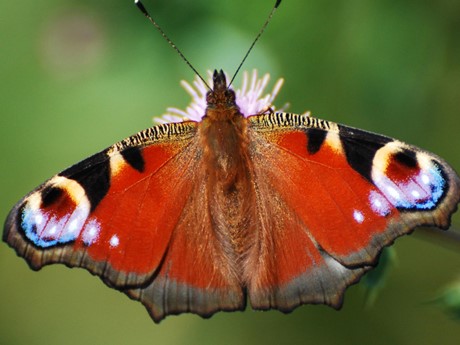Dog roses: meaning, myth and medicinal uses.
Lorienne Whittle, 07/06/2021
This climbing shrub is one of the most commonly spotted wild roses in the UK. In the summer months the pretty pink-white flowers pepper hedgerows, providing an important source of nectar for insects. Later in the year the bright red hips provide food for mammals and birds and are also collected by people to make rosehip syrup.
Identifying a dog rose (Rosa canina):
- This deciduous climbing shrub is part of the Rosaceae family
- Most easily recognised by the pink or white flowers with five large petals
- The flowers have a mild, sweet fragrance
- Like many of the rose family, the dog rose has hooked thorns along the stems
- The leaves are divided into 2-3 smaller paired leaflets
- From August to October red oval shaped hips can be seen in small clusters. Each rosehip is 1-2cm and contains many hairy seeds.

Flowering dog rose, Bruce Beattie/WTML
When and where to find dog rose:
- Flowers in May and June with the red hips ripening from August onwards.
- Often seen climbing through hedgerows, as well as at the edge of woodlands, on scrubland and grassland.

Dog rose scrambling through hedgerow, Madelaine Morris, Nature's Calendar recorder
Myth and medicinal uses:
In both ancient Greek and Roman mythology roses are heavy associated with love and beauty. As such roses are a favoured symbol and popular as a tattoo. More recently the dog rose was chosen as the county flower of Hampshire.
Archaeological finds have confirmed that, along with blackberries, rose hips were eaten as early as 2,000 BC. Reportedly called the dog rose due to the belief that the roots should be used if bitten by a rabid dog, this rose also goes by many other names. It is often called ‘wild rose’ but can be mixed up with other similar looking species. The prickly nature of the plant has also lent it to be called briar-rose and dog briar.
Whilst oranges and lemons are well known for their Vitamin C content, rose hips are the wild alternative in the UK, having been used to treat scurvy in the past. A sweet and tangy puree or syrup can be made from the autumn hips. Other reported medicinal uses of rose hip syrup include as a diuretic and a treatment for dysentery and gout. Rose hips are a ‘false-fruit’, left after the flower has died and the hairs inside the hips can be used to make itching powder.
What's next to record on Nature's Calendar?
Keep on track with which Nature's Calendar events to look out for at any time of the year with our handy downloadable phenology calendar.
The cold spring of 2021 means many of our late spring events have only just begun - our may still find trees and shrubs first flowering, for example.
Although it feels like summer has only just arrived we'll soon be looking ahead to our autumn events too, kicking off with the first ripening blackberries, as well as rowan and elder. Read more about how recording spring events is much more popular than autumn - we really need to know what is going on with the timing of natural events throughout the year, so please consider watching out for a recording our autumn events too.

